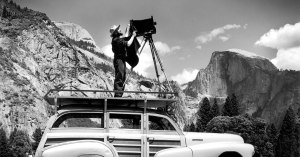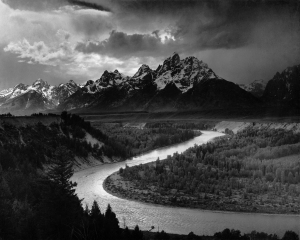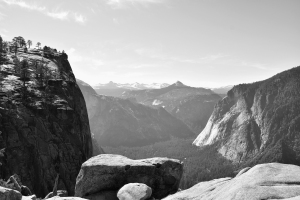Having recently returned from a trip to Yosemite National Park I’ve been studying possibly the most famous photographer to produce imagery of Yosemite – Ansel Adams. His work is also extremely fitting for this part of my course – monochrome.
Ansel Adams was an american landscape photographer, famed for his stunning black and white images of The American West. Together with Fred Archer he devised a process known as the ‘Zone System’.
The Zone System provides photographers with a systematic method of precisely defining the relationship between the way they visualize the photographic subject and the final results. Although it originated with black-and-white, the Zone System is also applicable to digital photography. Adams himself anticipated the digital image. As with color reversal film, the normal procedure is to expose for the highlights and process for the shadows.
For a full breakdown of this method click here to go to Wikipedia.
Adams also founded the photography group known as Group f/64 along with fellow photographers Willard Van Dyke and Edward Weston.
The New York Times published a great article on Group f/64, please click here to view it.
What struck me the most with Adams’ photography is just how bold and tonal his images were. They almost look processed. Being able to produce such sharp, moody contrasting images using the equipment available back in the mid 1930s is inspiring. It really has opened my eyes to just how much control photographers have over producing the visualised effect desired. It’s simply not a case of putting your DSLR into monochrome mode, or converting a colour image into black-and-white in post processing software. It’s about being conscious of the huge range of variables: tones, highlights, shadows, textures, form, shape, colours, depths, low key parts, high key parts…The list goes on!!







